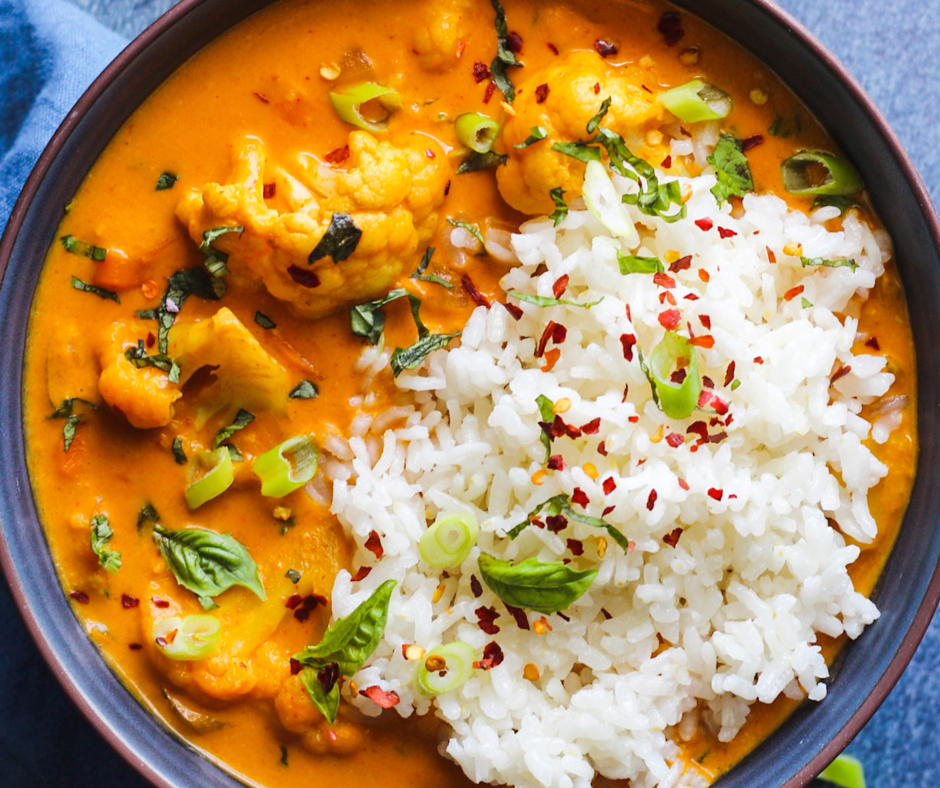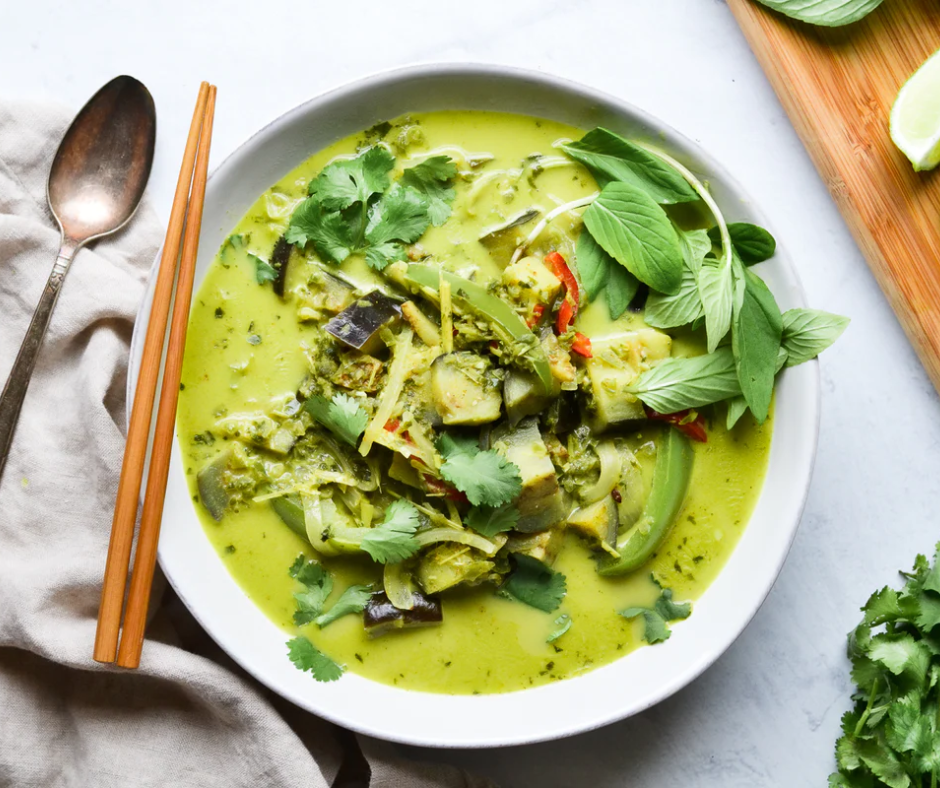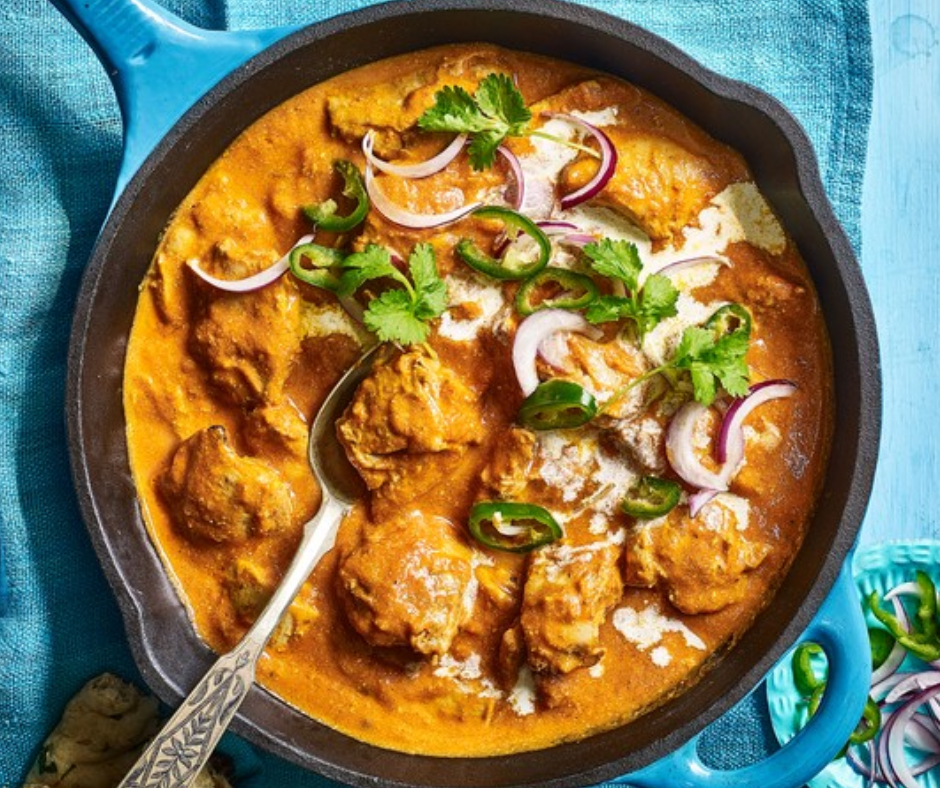Introduction
If you’re a curry lover, you’ve probably indulged in the rich flavors of both Thai and Indian curries. Each cuisine boasts a distinct blend of spices, herbs, and techniques, making their curries unique and beloved worldwide. In this article, we’ll delve into the flavors of Thai Curry vs Indian Curry, uncovering their differences and what makes them so captivating.
Overview Of Curry And Its Popularity
Curry, a South Asian dish, has gained immense popularity globally. It is a versatile dish that can be made in various ways, incorporating different ingredients, spices, and cooking methods. The spice blend is the key component of any curry, which gives it its characteristic flavor profile.
Curry has captured the hearts (and taste buds) of millions worldwide due to its bold and complex tastes. The harmonious combination of spices, such as turmeric, coriander, cumin, and chili, creates a depth of aromatic and satisfying flavor. Using coconut milk, tomatoes, onions, and garlic further enhances curry’s overall taste and texture.
Distinction When Comparing Thai Curry vs Indian Curry
While Thai and Indian curries share the common foundation of spices and herbs, they have distinctive characteristics that set them apart.
Thai curries: Thai curries are known for their vibrant and fresh flavors. They often incorporate lemongrass, lime leaves, galangal, and Thai basil. Thai curries generally have a lighter and slightly sweeter taste, with less emphasis on heat. The three main types of Thai curries are red, green, and yellow, each combining spices and ingredients.
Indian curries: Indian curries are renowned for their complexity and spiciness. They feature various flavors, from mild and aromatic to fiery and intense. Indian curries utilize a variety of spices, such as turmeric, cumin, coriander, cardamom, cloves, and cinnamon. The use of yogurt or cream gives Indian curries a rich and creamy texture.
So, when you compare Thai Curry vs Indian Curry, Thai curries are known for their fresh and vibrant flavors, while Indian curries offer a wide range of rich and complex tastes. Both cuisines provide a delightful culinary experience that caters to different palates and preferences.
Whether you prefer the citrusy notes of Thai curries or the fiery kick of Indian curries, it’s clear that these iconic cuisines have carved a special place in the hearts of food enthusiasts worldwide. So, the next time you crave a bowl of curry, you can savor the diverse flavors and cultural heritage that Thai and Indian curries offer.
Thai Curries
Characteristics And Flavors Of Thai Curries
Thai curries are known for their vibrant colors, aromatic herbs, and bold flavors. They are characterized by their spiciness, balanced by contrasting flavors such as sweetness and tanginess. Thai curries are made with a paste of herbs and spices combined with coconut milk to create a rich and creamy base. The paste is made by grinding ingredients such as lemongrass, galangal, garlic, shallots, and chili peppers. The most common Thai curries are red, green, and yellow, each with its unique spice blend and heat level.
The red curry is made with red chili peppers, giving it a fiery and spicy flavor. It is often cooked with meat such as chicken or beef and vegetables such as bamboo shoots and bell peppers. Green curry is made with green chili peppers, milder in heat than red chilies. It has a fresh and zesty flavor and is often cooked with chicken or seafood and herbs such as Thai basil and kaffir lime leaves. Yellow curry is milder in heat and has a creamy and slightly sweet flavor. It is often cooked with meat or vegetables and is known for using turmeric, giving it a vibrant yellow color.
Signature Ingredients In Thai Curries
Besides the base curry paste, Thai curries are known for their signature ingredients that add depth and complexity to the flavors. Some of these ingredients include:
- Coconut Milk: This creamy ingredient adds richness and sweetness to the curry, balancing the spiciness.
- Lime Leaves: These aromatic leaves add a citrusy and floral aroma to the curry.
- Thai Basil: This herb adds a licorice-like flavor to the curry and is often used in green curry.
- Fish Sauce: A staple in Thai cuisine, fish sauce adds a savory and umami flavor to the curry.
- Palm Sugar: This natural sweetener balances out the spiciness and acidity of the curry.
Thai curries are a delicate balance of flavors, combining spicy, sweet, tangy, and aromatic elements. Whether you’re a fan of the fiery red curry, the fresh and zesty green curry, or the milder and creamier yellow curry, Thai curries are sure to tantalize your taste buds and leave you craving for more of their unique and authentic flavors.
Indian Curries
Characteristics And Flavors Of Indian Curries
Indian curries are known for their rich and complex flavors. They often combine a variety of spices, such as cumin, coriander, turmeric, cardamom, and cinnamon, creating a harmonious blend of tastes. Different spice blends, known as masalas, give Indian curries their signature flavor profiles.
What sets Indian curries apart is the attention to detail in the cooking process. The spices are typically heated in oil or ghee, releasing their flavors and aromas. This technique, known as tempering, enhances the taste of the overall dish. Additionally, the long cooking time allows the flavors to develop and intensify.
Indian curries come in various forms, such as butter chicken, tikka masala, and rogan josh. Each curry has distinct flavors and ingredients, making Indian cuisine a treasure trove of culinary delights.
Signature Ingredients In Indian Curries
While the spice blends are crucial in Indian curries, several signature ingredients contribute to their unique flavors. Some of the must-have ingredients include:
- Onions and garlic: These aromatic vegetables form the base of many Indian curries, adding depth of flavor.
- Fresh ginger: Known for its medicinal properties, ginger adds a warm and slightly spicy taste to the curries.
- Tomato: Tomatoes are often used to create a balanced and tangy flavor profile in the curries.
- Yogurt: Yogurt is commonly used to tenderize meat and add a creamy texture to the curries.
- Fresh herbs: Cilantro, mint, and curry leaves are frequently used to garnish and enhance the flavors of Indian curries.
Whether it’s the fiery heat of a vindaloo curry or the creamy richness of a korma, Indian curries offer a diverse range of flavors that satisfy every palate.
In conclusion, Thai and Indian curries have charm and distinct flavors. While Thai curries emphasize fresh herbs and unique ingredients like lemongrass and galangal, Indian curries showcase a rich tapestry of spices and flavors. Whichever cuisine you choose, both Thai and Indian curries guarantee a delightful gastronomic experience.
Thai Curry vs Indian Curry
Consistency And Texture
Regarding the consistency and texture of Thai Curry vs Indian Curry, both offer distinct variations. Thai curries tend to have a thinner consistency compared to their Indian counterparts. They are often soup-like and have a lighter texture. Thai curries are made using a paste that consists of ingredients like lemongrass, galangal, and shrimp paste, which gives them their unique taste and aroma.
On the other hand, Indian curries are known for their rich and thick consistency. Indian curries are typically made by sautéing a combination of onions, garlic, and spices, then blended into a smooth sauce. This sauce is often creamy and thick, resulting in a more hearty and filling curry.
Flavor Profiles And Spices Used
The flavor profiles and spices used in Thai Curry vs Indian Curry differ greatly. Thai curries are known for their vibrant and fresh flavors. They often incorporate coconut milk, lime leaves, and fresh herbs such as basil and coriander. Thai curries are also known for their balance of flavors, combining sweetness, spiciness, and sourness.
Indian curries, on the other hand, are characterized by their complex and aromatic spice blends. Indian curries commonly feature spices like cumin, coriander, turmeric, and cardamom. These spices impart a rich and deep flavor to the curries, making them robust and sometimes fiery.
It’s important to note that both Thai and Indian curries offer a wide range of flavors and spice levels. Thai curries are generally milder compared to Indian curries, which can vary from mild to extremely spicy depending on the region and the dish itself.
In conclusion, Thai and Indian curries are distinct in their consistency, texture, flavor profiles, and spice usage. Thai curries are known for their light and soupy consistency, fresh flavors, and a balance of sweetness, spiciness, and sourness. Indian curries, on the other hand, have a rich and thick consistency, are often creamy, and feature complex and aromatic spice blends. Both cuisines offer a delightful array of flavors and can cater to different taste preferences. So, whether craving something light and refreshing or rich and bold, there’s a curry for every palate.
Choosing Your Favorite Curry
Regarding satisfying your cravings for a flavorful curry, two cuisines stand out: Thai and Indian. Both Thai and Indian curries have distinctive flavors and ingredients that make them beloved by food enthusiasts around the world. If you are torn between these two iconic cuisines, here are some factors to compare Thai Curry vs Indian Curry before choosing.
Factors To Consider When Deciding Between Thai And Indian Curry
Spiciness: Thai curries are known for their bold and spicy flavors, while Indian curries can range from mild to extremely hot. If you prefer a milder heat, Indian curries may be more to your liking.
Ingredients: Thai curries often incorporate ingredients like lemongrass, kaffir lime leaves, and Thai basil, which result in vibrant and fragrant dishes. On the other hand, Indian curries feature a variety of spices, such as cumin, coriander, and turmeric, creating complex and aromatic flavors.
Base: Thai curries typically use coconut milk as their base, providing a creamy and subtly sweet taste. Indian curries, on the other hand, may use yogurt, cream, or a combination of both, resulting in a rich and indulgent gravy.
Personal Preferences And Taste Preferences
Ultimately, the choice between Thai and Indian curry comes from personal preference. Consider the following factors:
Flavor Profile: Thai curries are lighter, fresher, and herbaceous, balancing sweet, sour, and spicy notes. Indian curries are often richer, deeper, and layered with a wide range of flavors, offering a combination of heat, sweetness, and complexity.
Accompaniments: Thai curries are typically enjoyed with fragrant jasmine rice, while Indian curries pair well with various types of bread, such as naan or roti. Consider which type of starch you prefer or if you have any dietary restrictions.
Food Allergies or Dietary Restrictions: If you have any food allergies or dietary restrictions, paying attention to the ingredients used in each curry is important. Thai curries may be more suitable for those with dairy allergies, as they often use coconut milk instead of yogurt or cream.
Whether you go for the vibrant and spicy flavors of Thai curry or the rich and diverse flavors of Indian curry, both cuisines offer an unforgettable culinary experience. So explore, experiment, and savor the delightful flavors these renowned cuisines offer.
FAQ: Thai Curry vs Indian Curry: Unveiling the Flavors of Two Iconic Cuisines
Q: What is the main difference between Thai curry and Indian curry?
A: Thai curry and Indian curry may both be broth-based dishes, but they have distinct differences in flavors, textures, and ingredients.
Q: Which curry is hotter and spicier, Thai or Indian?
A: Thai curries are generally hotter and spicier, while Indian curries can vary in spice levels depending on the recipe and region.
Q: What protein sources are commonly used in these curries?
A: Indian curries often include pulses like lentils, chickpeas, or animal protein sources, whereas Thai curries frequently use tofu or seafood. However, there are exceptions to this generalization.
Q: How do the flavors of Indian and Thai curries differ?
A: Indian curries typically have a richer flavor profile and often include a spice blend that features cumin, coriander, and turmeric. Thai curries, on the other hand, have a brighter and fresher flavor and are often enhanced with lemongrass, galangal, and kaffir lime leaves.
Q: What spices should I keep on hand for Indian curry and Thai curry?
A: For Indian curry, it is useful to have key spices like cumin, coriander, and turmeric. For Thai curry, prepared Thai curry paste (which can be homemade and frozen) is a must. Ultimately, rely on your taste buds to guide you to the curry dishes you love.
Q: Are there any exceptions to the general differences mentioned above?
A: Yes, there are always exceptions when it comes to regional variations and personal preferences. One such example is fenugreek, an Indian spice that can replace or enhance the flavors of Thai curry.
Conclusion
Now you should know how to compare Thai Curry vs Indian Curry. Thai curry and Indian curry are both beloved and iconic cuisines. Each offers unique flavors, ingredients, and cooking techniques that have captivated people worldwide. Whether you prefer the bold and spicy flavors of Indian curry or Thai curry’s fragrant and aromatic flavors, both cuisines have something special to offer.
Appreciating The Diversity Of Curry
One of the most fascinating aspects of curry is its diversity. Thai curry and Indian curry are just two examples of the countless variations. Within each cuisine, you’ll find regional variations, different spice blends, and unique ingredients that give each dish its distinct flavor profile. Exploring the different types of curry within Thai and Indian cuisines is like embarking on a culinary adventure that will never disappoint.
Final Thoughts And Recommendations For Trying Both Thai And Indian Curries
For those new to curry or those looking to expand their culinary horizons, trying both Thai and Indian curries is highly recommended. Each cuisine offers a different experience and a chance to discover new flavors. If you prefer complex and multi-layered flavors, Indian curry may be the perfect choice for you. On the other hand, if you enjoy vibrant and aromatic dishes, Thai curry should be at the top of your list.
To fully appreciate the flavors of Thai and Indian curry, it’s important to try various dishes within each cuisine. Start with the classics such as green or red curry for Thai cuisine and tikka masala or vindaloo for Indian cuisine. Then, venture into lesser-known dishes and explore the diverse range of flavors each cuisine offers.
Remember, the beauty of these cuisines lies not only in the flavors but also in the cultural heritage and traditions accompanying them. Take the time to learn about the history and significance of each dish, and you’ll gain a deeper appreciation for Thai and Indian curry.
So, whether you’re enjoying a steaming hot bowl of red curry or savoring a fragrant plate of biryani, relish every bite and immerse yourself in the wonderful world of Thai and Indian curry.



